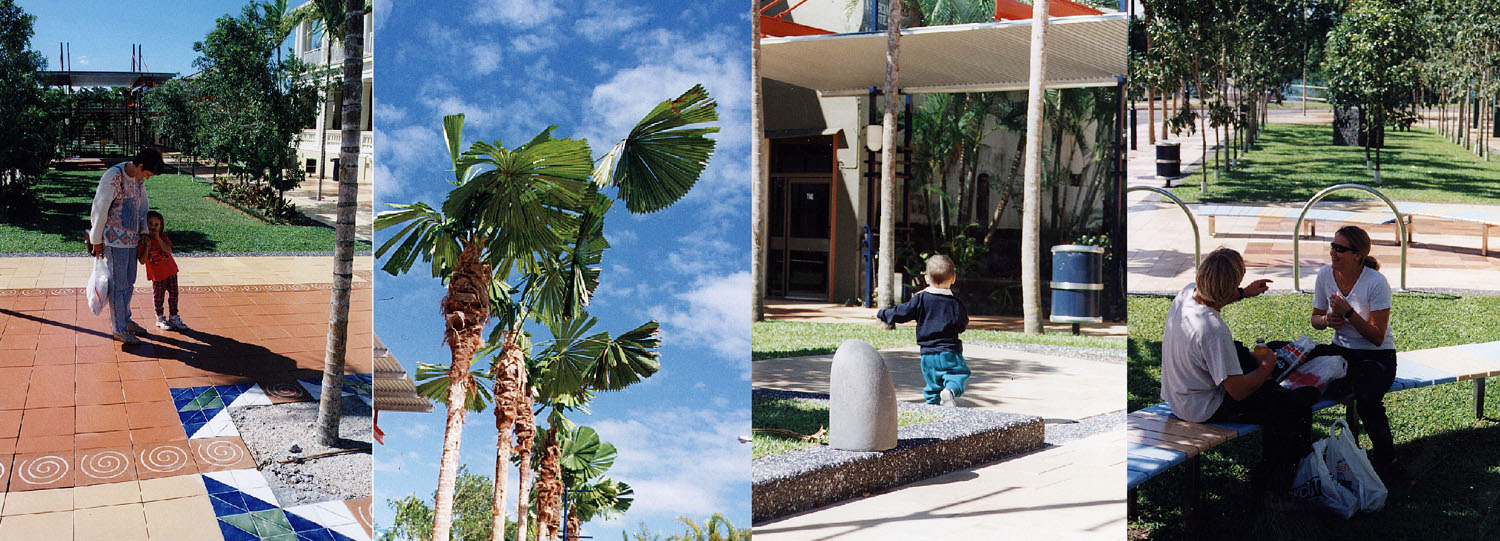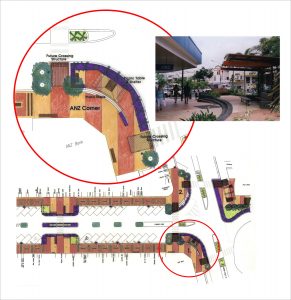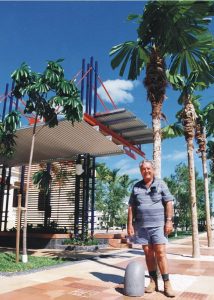Edith Street ‘hums’ on a Saturday morning with the bustle of shopping and street chatting. This festive moment lasts for a few hours and is exactly the kind of ambience and energy which needs to flow into other parts of the town and into the evening. New civic spaces have now been created to assist these social patterns in Innisfail.

The Innisfail Revitalization Strategy occurred in a series of stages. The first involved creating a boulevard and an Information Centre and Interpretive Trail to connect the business heart of Edith Street to the town’s most significant attraction – the river. Stage Two involved creating a strong continuous spine within the business heart of town centre and along Edith Street as far as Owen Street. Stage Three involved upgrading the riverfront carpark and tourist arrival area. Ongoing stages will retrofit the riverfront harbour, build the footpaths leading to the town entry, and modify the town plan.
Innisfail has traditionally regarded the river as an adversity to overcome: an element bringing floods and crocodiles, rather than a superb natural setting. Perhaps for this reason, the main artery of town, Edith Street has been severed from it. This created a “dead” spot right where the town should have had a thriving public realm. A completely retrofitted town centre has now been built through a community design and construction process. The plan to date has upgraded the town centre over a period of five years with a budget of three million dollars.
The consultation process at Innisfail centred around an active collaborative design process with over 300 residents. A whole-of-town strategy was generated by the 10 day shop front workshop, and a plan to move the town forward was finally mediated after twenty years of indecision. The community’s ideas are embedded into the plan for revitalising Innisfail, which have created an integrated town planning, capital works and public art process.
From bitumen to lush streetscapes
Innisfail’s main street was a bitumen covered expanse which failed to acknowledge its wonderful art deco buildings, and failed to link its river with the business heart. No major streetscape works had been carried out since the mid 1960’s. The main street has been totally retrofitted with a strong spine which encourages activities to spill out into the footpath and embrace its tropical climate and landscape. The elegant and lush streetscapes create a civic character reminiscent of times when civic-ness was a valued asset in regional towns.
Edith Street has been designed to remove all grade separations in the town centre. Specifically designed bollards and drainage systems have replaced kerb and channelling. Niche planters have been designed so no angled car parks are lost, and an innovative drainage channel system allows for highly efficient stormwater clearance.
Innisfail has a strong Italian community with a tradition of meeting and gathering in the business heart of town. Locals can now do this in shade and comfort. Awkwardly sloping intersection were converted into lunchtime sitting niches with tropical foliage and plentiful shade. The town’s Art Deco architecture has been subtly reinforced by a bold paving system incorporating civic scale pavers in warm colours.
Innisfail town centre has been built with local labour and local materials, with a frugal budget and with the participation of local artists and artisans. It is difficult to build quality, long-term civic spaces in regional towns where farmers and industry are vulnerable. When out-of-town contractors nearly forced the project to stall due to overpricing, the local contractors and council banded together to allow it to proceed. With good leadership, towns like Innisfail can rediscover their public realm and create a contemporary regionalism of long-term value.




